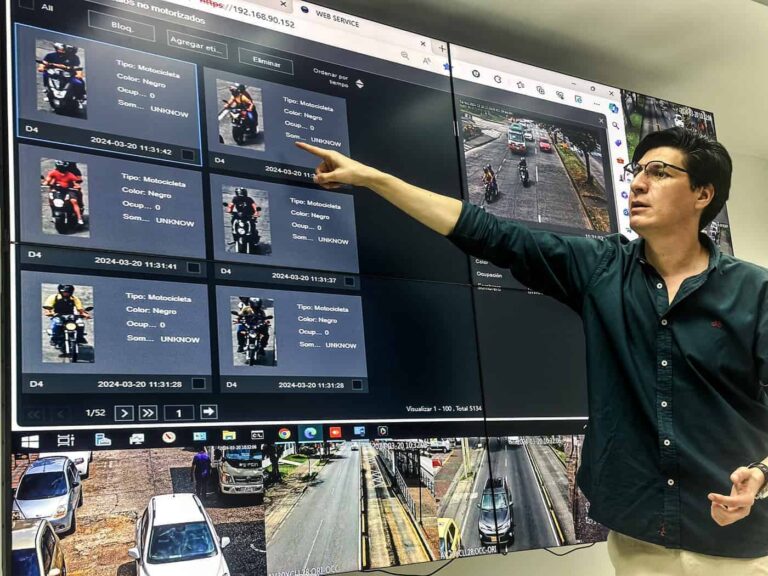Enhancing Mobile QA with AI-Driven Testing
AI mobile testing has drastically changed the way quality is ensured in mobile apps. As device fragmentation increases and mobile ecosystems continuously change, conventional validation methods will not be able to scale at an efficient rate. AI-powered intelligent workflows will optimize test execution and allow for predictive actions that can predict failure events before they are enacted in production. This development is important in distributed pipelines with continuous integration and deployments, where fast and accurate validation cycles are required.
Mobile apps operate in diverse settings that include various operating systems, processor architectures, and network conditions. Conventional automation tools, although dependable in stable environments, struggle to adjust when conditions shift during execution. AI-powered test execution enhances resilience by recognizing patterns in the performance of applications, detecting unexpected signals and changing coverage strategies automatically.
Consequently, QA engineering shifts from reactive validation to proactive quality engineering, ensuring the performance of the mobile application meets production-grade reliability specifications.
Evolution of Mobile QA in the AI Era
Historically, mobile QA depended heavily on scripted automation tools like Espresso or Appium. Although effective for regression cycles, they faced challenges when application structures were altered or unforeseen states appeared. AI-driven systems, on the other hand, evolve dynamically. They use logs, defect records, and usage data, guaranteeing that coverage grows with minimal manual involvement.
The following developments are impacting this transformation:
- Natural Language Processing for Test Creation: Requirement specifications and user stories are converted directly into executable sequences.
- Computer Vision for UI Validation: Visual models assess rendering results on different devices, detecting minor layout variations.
- Self-Healing Test Automation: Identifiers adjust automatically as application locators change, reducing script failures.
- Predictive Defect Analysis: Historical data is used to focus on high-risk areas for more thorough testing.
By using these approaches, QA processes grow more robust, effortlessly adjusting as applications become more complex.
AI Models in Mobile QA Workflows
AI mobile testing typically blends several categories of models, each serving distinct purposes inside CI/CD workflows:
- Classification Models: These models categorize test failures, such as layout issues, API problems, or security misconfigurations.
- Anomaly Detection: Identifies statistical outliers in performance metrics like CPU consumption or response times.
- Reinforcement Learning: Exploration-driven agents probe unexpected application states that static test suites often miss.
- Generative Models: Create realistic interaction sequences to simulate scenarios such as rapid user input, device orientation changes, or unstable connectivity.
These models together enhance coverage without increasing authoring workload, making certain that validation stays in sync with rapid development. Moreover, combining various AI models establishes a more robust and flexible testing environment. Classification, anomaly detection, reinforcement learning, and generative models collaboratively adapt test execution in real-time based on telemetry and past defect patterns. It will automatically determine which scenarios are high-risk while reducing unneeded repeated runs on lower-impact paths. Over time, the AI can refine its own processes and patterns of previous failures and improve predictive coverage while reducing flakiness in the CI/CD cycle, producing a more intelligent and aggressive self-optimizing test suite.
Addressing Device Fragmentation
A major challenge in mobile QA is device fragmentation. Different OEMs add vendor-specific overlays, system versions evolve at different speeds, and hardware capabilities vary significantly. AI mitigates this complexity by clustering device groups, identifying representative configurations, and running optimized subsets of tests. This approach balances coverage with efficiency, ensuring statistical assurance without redundant execution.
Still, emulator-based checks alone are insufficient. Real device testing remains crucial for detecting hardware- or OS-related issues. AI enhances the testing of physical devices by correlating logs from physical devices and identifying issues like rendering errors, battery abnormalities, or OS-specific crashes. This information helps expedite and improve the accuracy of root-cause analysis, which ultimately reduces the time to address the problem.
Test Data Synthesis and Maintenance
Data remains a cornerstone of QA, and AI has introduced new ways of handling it. Generative adversarial networks (GANs) and simulation engines create synthetic inputs that mirror real-world patterns—spikes in usage, language-specific text, or sensor-driven events. This preserves privacy by reducing dependence on production datasets while still ensuring authenticity.
Maintenance of these datasets is equally important. AI systems flag obsolete cases, recommend updates based on new features, and retire irrelevant ones. The result is a living dataset that evolves with the application, ensuring that validation consistently reflects production realities.
Performance Engineering through AI
Performance has always been a defining metric for mobile applications. Delays in rendering, uneven frame rates, or energy-intensive operations directly influence user perception. Traditional profiling tools provide raw logs but often require human analysis. AI automates this layer, correlating metrics in real time and identifying degradation trends before they affect end-users.
Convolutional neural networks (CNNs) evaluated the smoothness of rendering using historical frames, and recurrent neural networks (RNNs) analyzed increasing levels of network latency. Moreover, machine-learning models change baselines over time so that alerts communicate significant departures from normal behavior instead of a static threshold. Reducing false positives enables QA teams to focus on conflicts that pose critical risk.
AI-enabled performance engineering potentially benefits from adaptive baselines that change as application behavior changes. Predictive models can use correlated CPU, memory, and network metrics across multiple devices and usage scenarios to identify small performance degradations prior to an end-user experience degradation. Reducing false positives allows the QA teams to focus on real risks while developing actionable metrics given the different ways in which applications will use resources and respond in mobile environments.
Security and Reliability in Mobile QA
Security remains a critical dimension in modern QA. AI augments penetration testing by simulating adversarial inputs, detecting weak encryption, or flagging unsafe API interactions. Behavioral anomaly models further enhance protection by recognizing unusual usage signatures that may point to exploitation attempts.
Reliability receives equal attention. AI frameworks execute fault injection scenarios, modelling crashes, abrupt network drops, or resource shortages. Monitoring applications recovering from load provides a real-world measure against resilience. Automating such tests at scale gives QA teams the assurance that applications can handle unexpected real-world conditions.
Moreover, dependency mapping with AI identifies vulnerabilities in complex service chains. If a mobile client interacts with multiple backend services, predictive models anticipate cascading failures, helping teams strengthen weak links before deployment.
Continuous Feedback in CI/CD
Integrating AI transforms QA into a continuous feedback process. Test suites are dynamically prioritized based on recent code commits, likelihood of defects, and historic failure data. This approach reduces cycle time while maintaining depth of coverage. Instead of presenting teams with raw error outputs, AI-powered dashboards provide contextual insights that point directly to probable causes.
In hybrid environments where mobile clients interact with microservices, AI ensures end-to-end traceability. Failures are correlated within the mobile layer and across the service dependencies, making reversions less likely and releases more predictable. Extending continuous feedback, AI enables dynamic prioritization of test suites based on recent code commits, defect probability, and historical failures.
Linking metrics from mobile clients with the parent microservices will allow teams to be quickly alerted of dependent regressions. These capabilities will provide end-to-end traceability, quickly assess root causes, and improve testing modes incrementally, which together will help to stabilize and provide predictability to releases in complex, distributed systems.
Enhancing Collaboration Across Teams
AI also strengthens collaboration by aligning technical detail with broader enterprise goals. Models can convert defect clusters into summaries that product managers and executives understand, creating a shared language around impact. Developers receive prioritized defect insights, while decision-makers gain visibility into potential enterprise implications.
Collaboration across distributed teams is also strengthened. Unified dashboards display real-time metrics that can be accessed remotely, reducing redundant work and enabling parallel testing. This reduces cycle times without lowering the rigor of testing.
Platform-Level Acceleration
At the infrastructure level, cloud-based platforms integrate AI-driven capabilities for scaling mobile QA. LambdaTest, for example, offers an AI-native platform for performing mobile tests on thousands of actual devices and virtual environments. LambdaTest accelerates defect finding with self-healing locators, intelligent test orchestration and analytics, while maximizing coverage in volatile ecosystems.
Furthermore, their AI-driven dashboard provides engineering teams with predictive quality metrics, improving the quality of releases while maintaining performance and reliability.
Future Outlook of AI in Mobile QA
The evolution of AI mobile testing points toward deeper integration of federated learning and multi-modal analytics. AI systems will combine insights from CPU usage, network telemetry, and user interaction patterns to deliver holistic quality assessments.
Generative AI is expected to reduce the burden of regression maintenance by creating adaptive test suites based on real-world production behavior. At the same time, hybrid reasoning systems will make defect attribution more explainable, allowing engineering teams to understand why a model flagged a failure.
Edge AI is also set to influence this domain. Lightweight models running directly on devices can provide instant feedback during beta testing or user acceptance trials. This localized intelligence shortens feedback loops and ensures that validation occurs closer to the end-user environment.
AI end-to-end testing leverages machine learning to simulate real user workflows, identifying hidden issues across complex systems. It reduces repetitive manual test design while dynamically adjusting to changing interfaces. Many teams fail to train models properly, underestimating the need for quality datasets.
Conclusion
As the complexity of mobile application lifecycles continues to escalate, the utilization of AI in mobile testing is becoming more relevant than ever. From device fragmentation to predictive defect detection, AI enables QA to move from a reactive function to a much more proactive, intelligence-driven process. Using a mobile testing strategy that combines real device testing with adaptive AI models will allow organizations to achieve broad application performance regardless of operating device states.
As federated and generative models continue to mature, mobile QA is set to transition into an era of autonomous validation, where intelligence and automation converge to guarantee reliability at production scale.






